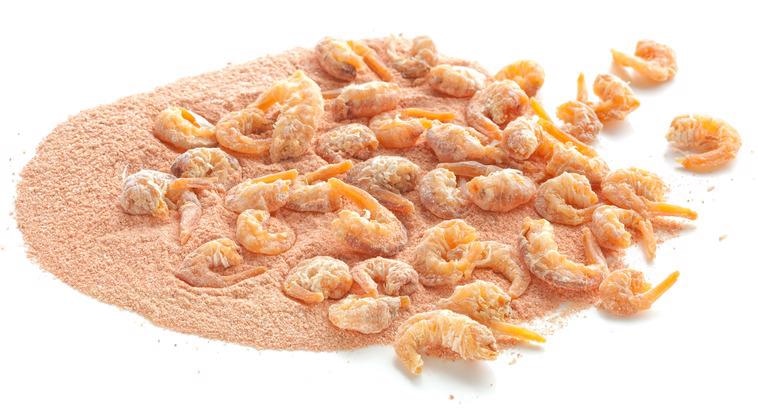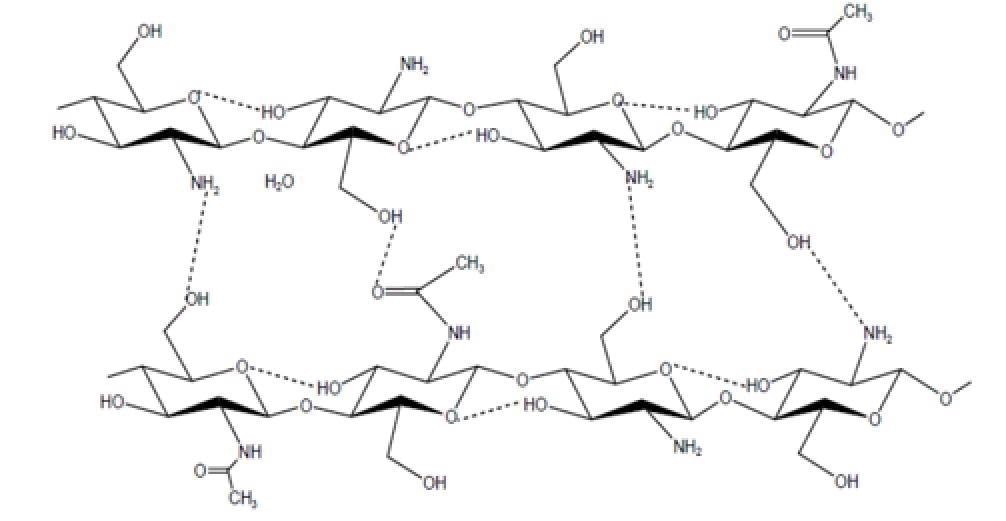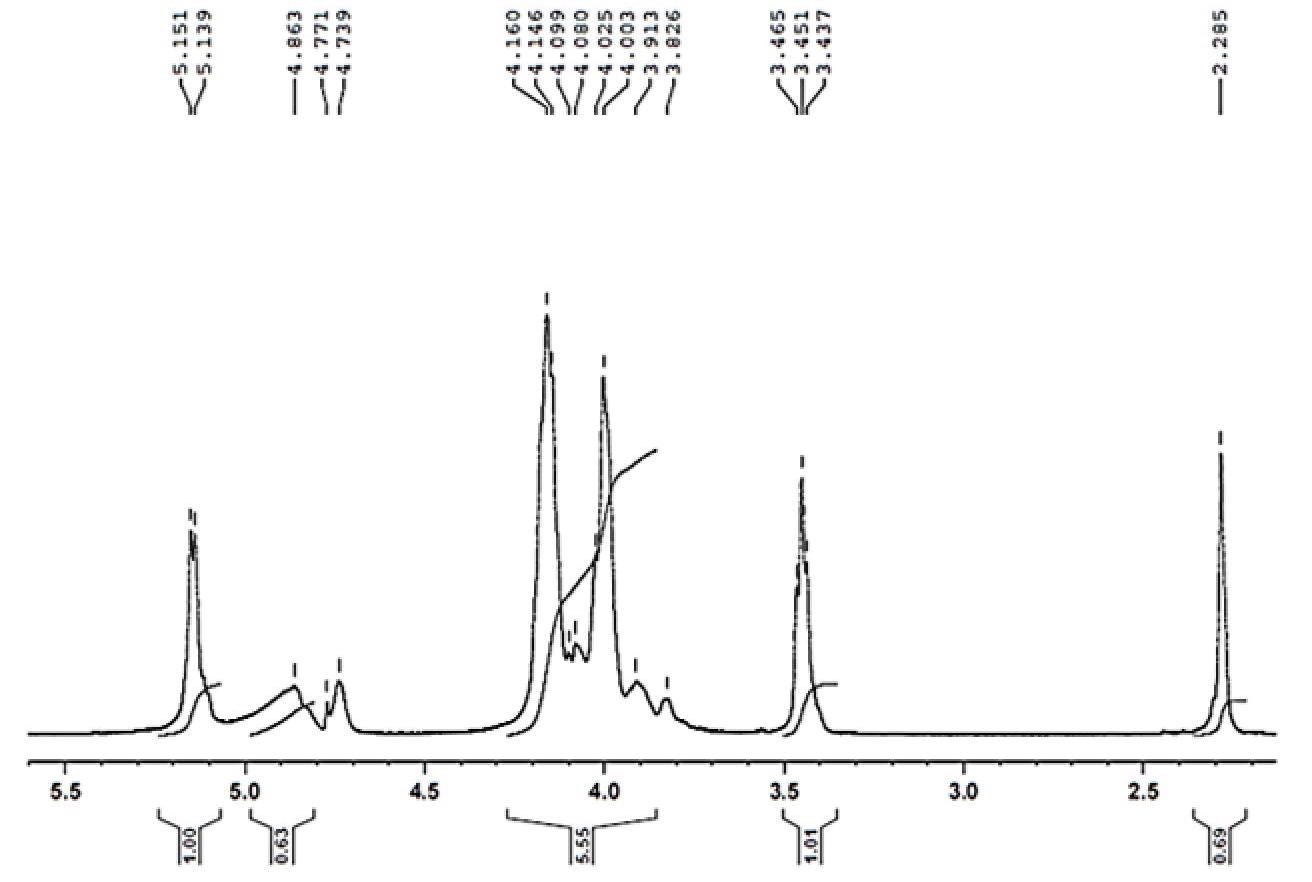Researchers have presented a study in the journal Water Energy Nexus for the structural characterization of the organic compound polymeric chitosan in order to consider its application potential.

Study: Structural characterization of polymeric chitosan and mineral from Omani shrimp shells. Image Credit: EvergreenPlanet/Shutterstock.com
Today, chitosan is used in medicine, predominantly as a filler in drugs for the treatment of high blood pressure, high cholesterol, obesity, wound healing, and other conditions but there is little known about its true health benefits.
Chitosan is a polymer, and it is typically characterized by its biocompatibility, biodegradability, and non-toxicity. The objective of the study, published in the journal Water-Energy Nexus, was to isolate a good quality chitosan polymer from the shrimp shell waste and characterize it by using spectroscopic methods.
 Linear chitosan crystalline structure. Image Credit: H. Ali Said Al Hoqani metal., Water-Energy Nexus
Linear chitosan crystalline structure. Image Credit: H. Ali Said Al Hoqani metal., Water-Energy Nexus
Found on the hard outer shells of crustaceans including crab, lobster, and shrimp, chitosan is a sugar that can also find use in agriculture and winemaking. Due to the abundance of shrimp shell waste that piles up year on year, causing environmental disruption and pollution, finding ways of using all parts of the popular shellfish.
Shrimp is regarded as a ‘golden trade’ fisheries product in the Sultanate of Oman. Fresh shrimp and its frozen product are regularly exported all around the world.
EU countries make up the main consumer base of shrimp and shrimp products, which are mainly imported as frozen products without the head and shells. This is because the shrimp shells are removed during processing before being exported.
Therefore, shrimp waste such as shells and heads are being dumped in the open air and back into the sea. As a result, it creates environmental pollution which has effects on human health, creating bad, musty odors and adding to ever-growing landfill sites.

FT-NIR spectrum of the extracted chitosan. Image Credit: H. Ali Said Al Hoqani metal., Water-Energy Nexus
The researchers found that the isolated shrimp shell chitosan differed from that found on other crustaceans: “The results showed that the obtained isolated chitosan from shrimp shells was highly deacetylated compared to standard chitosan, and it could be useful for the preparation of commercial, industrial products, and pharmaceutical drugs,” explained Dr. Mohammed Amzad Hossin, Associate Professor at the University of Nizwa, Oman.
In order to characterize the unique properties of the shrimp-derived chitosan, the researchers applied Fourier-Transform Near-Infrared Spectroscopy (FT-NIR) and Nuclear Magnetic Resonance Spectroscopy (NMR).
The team obtained their shrimp samples – around 60 Kg of Omani shrimp - from local markets across three different regions in Sultanate. The shrimp samples were purchased early in the day, morning time. The shrimp were then packed and stored in an icebox and transported to the master lab. The shrimp samples were verified by local people and through the website set up for the study.
The chitosan was extracted from the samples by way of demineralization. The samples were ground up to a fine powder before being treated with hydrochloric acid and heated with a constant stirring process over an hour. Once this stage was completed the samples were left to dry in an oven at 50 oC for an hour.
The shrimp shell waste the team acquired exhibited significant percentages of chemical constituents primarily protein (30-40%), calcium carbonate (30-50%), and chitin (20-30%). There are also several minor chemical constituents that can be found in the waste shells. These chemical constituents can be regarded as primary raw materials for the production of agricultural and pharmaceutical products.
As previously established, once shrimp has been processed in the Omani region, vast amounts of shrimp waste are produced. However, little has been done in way of evaluating whether alternative reuse strategies could reduce the amounts of waste produced. “The literature search showed that there is no previous work on the extraction and characterization of chitosan from the shrimp waste shells in Oman,” said Hossin.
The researchers found that the shrimp shells were of excellent quality, highly deacetylated when compared with standard chitosan, meaning it could be useful for the preparation of commercial, industrial products, and pharmaceutical drugs: “Our future target will be evaluated [sic] the pharmacological activity of the isolated chitosan from the shrimp shells and its medicinal approach,” stated Hossin.
The study shows that rather than adding to the environmental crisis and pollution which negatively impacts both natural and human surroundings, the shrimp cell waste with its unique properties and polymeric chitosan could be used in biomedical applications as well as a useful natural component in agriculture.

1H-NMR spectrum of standard chitosan. Image Credit: H. Ali Said Al Hoqani metal., Water-Energy Nexus
References:
H. Ali Said Al Hoqani, N. Hamed Khalifa Al Shaqsi, M. Amzad Hossin, M. AbdullahAl Sibani, Structural characterization of polymeric chitosan and mineral from Omani shrimp shells, Water-Energy Nexus (2021), https://www.sciencedirect.com/science/article/pii/S2588912521000242?via%3Dihub
Disclaimer: The views expressed here are those of the author expressed in their private capacity and do not necessarily represent the views of AZoM.com Limited T/A AZoNetwork the owner and operator of this website. This disclaimer forms part of the Terms and conditions of use of this website.